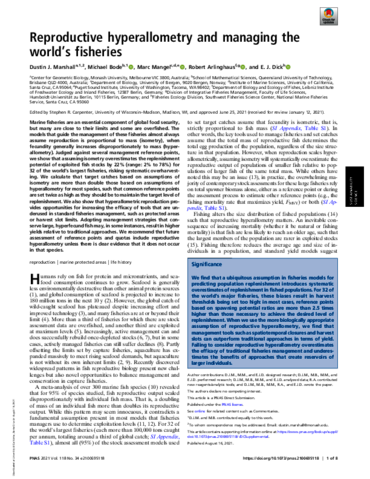Marine fisheries are an essential component of global food security, but many are close to their limits and some are overfished. The models that guide the management of these fisheries almost always assume reproduction is proportional to mass (isometry), when fecundity generally increases disproportionately to mass (hyperallometry). Judged against several management reference points, we show that assuming isometry overestimates the replenishment potential of exploited fish stocks by 22% (range: 2% to 78%) for 32 of the world’s largest fisheries, risking systematic overharvesting. We calculate that target catches based on assumptions of isometry are more than double those based on assumptions of hyperallometry for most species, such that common reference points are set twice as high as they should be to maintain the target level of replenishment. We also show that hyperallometric reproduction provides opportunities for increasing the efficacy of tools that are underused in standard fisheries management, such as protected areas or harvest slot limits. Adopting management strategies that conserve large, hyperfecund fish may, in some instances, result in higher yields relative to traditional approaches. We recommend that future assessment of reference points and quotas include reproductive hyperallometry unless there is clear evidence that it does not occur in that species.
Reproductive hyperallometry and managing the world’s fisheries
Projekt Boddenhecht , Rezensierter Artikel

Marshall, D. J., Bode, M., Mangel, M., Arlinghaus, R., Dick, E. J. (2021). Reproductive hyperallometry and managing the world’s fisheries. Proceedings of the National Academy of Sciences of the United States of America, 118, e2100695118.
Veröffentlicht
: 2021
Erschienen in
: Proceedings of the National Academy of Sciences of the United States of America, 118, e2100695118
